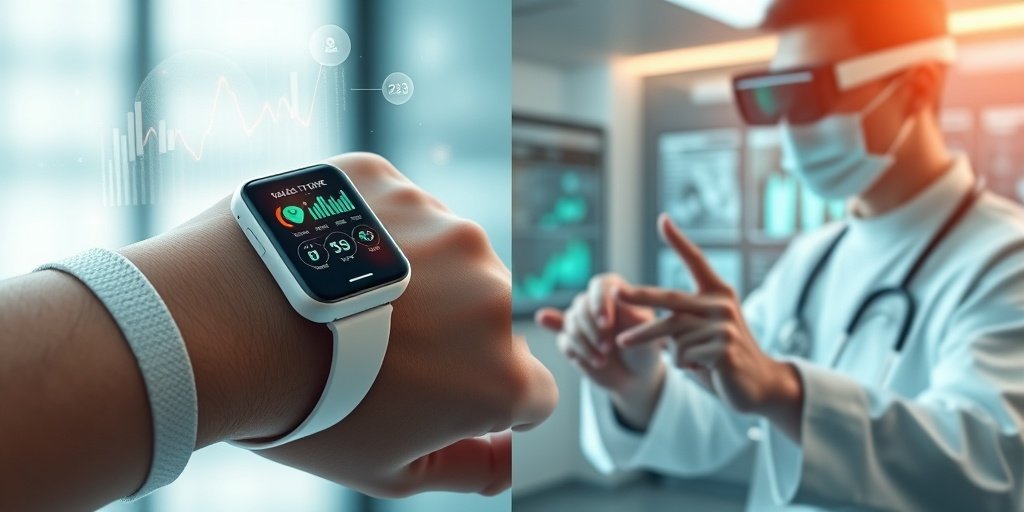⚡ Quick Summary
This chapter explores the advancements in wearable biosensing technologies, highlighting their transformative role in real-time physiological monitoring and personalized healthcare. Key innovations such as machine learning and nanomaterials are paving the way for enhanced diagnostics and health management solutions.
🔍 Key Details
- 📊 Focus: Wearable biosensing technologies
- 🧩 Key Innovations: IoT, BLE, 5G, machine learning, nanomaterials
- ⚙️ Applications: Personalized health monitoring, disease diagnosis, fitness, therapeutic interventions
- 🏆 Case Studies: Continuous glucose monitoring, workplace stress monitoring
🔑 Key Takeaways
- 🌐 Wearable biosensors are revolutionizing health monitoring by enabling real-time data collection.
- 💡 Machine learning enhances data processing and predictive analytics for personalized healthcare.
- 🔬 Nanomaterials like graphene and quantum dots improve sensor sensitivity and efficiency.
- 📈 Future trends include multimodal sensor systems and AR/VR integration.
- ♻️ Sustainability and self-healing technologies are crucial for future biosensor development.
- 🏥 Significant case studies demonstrate the impact of wearable biosensors in managing diabetes and workplace stress.
- 🚧 Challenges remain in scalability, commercialization, and environmentally conscious design.

📚 Background
The field of wearable biosensing is a multidisciplinary domain that merges healthcare, materials science, and information technology. With the increasing demand for personalized health solutions, wearable biosensors are becoming essential tools for monitoring physiological and biochemical parameters in real-time. This evolution is driven by advancements in connectivity technologies and innovative materials.
🗒️ Study
The chapter provides a comprehensive overview of the current state and future directions of wearable biosensing technologies. It discusses the integration of Internet of Things (IoT) and wireless technologies such as Bluetooth Low Energy (BLE) and 5G, which facilitate seamless data exchange and remote monitoring. The authors also delve into the role of machine learning and artificial intelligence in enhancing the capabilities of these devices.
📈 Results
The chapter highlights significant advancements in lab-on-skin technologies that support non-invasive diagnostics. Additionally, the use of nanomaterials has led to improved sensor performance, making them more sensitive and efficient. The authors present case studies that illustrate the practical applications of these technologies, particularly in managing chronic conditions like diabetes and monitoring stress levels in the workplace.
🌍 Impact and Implications
The implications of wearable biosensing technologies are profound, with the potential to transform healthcare delivery and occupational health. By enabling continuous monitoring and personalized interventions, these technologies can significantly improve patient outcomes and enhance quality of life. However, addressing challenges related to scalability and environmental sustainability will be crucial for widespread adoption.
🔮 Conclusion
This chapter underscores the transformative potential of wearable biosensors in modern healthcare. As technology continues to evolve, the integration of advanced materials and intelligent systems will likely lead to more effective health monitoring solutions. The future of wearable biosensing holds great promise, and ongoing research will be essential to overcome existing challenges and unlock new possibilities.
💬 Your comments
What are your thoughts on the future of wearable biosensing technologies? We invite you to share your insights and engage in a discussion! 💬 Leave your comments below or connect with us on social media:
Technologies and emerging trends in wearable biosensing.
Abstract
This chapter examines advancements and future trajectories in wearable biosensing technologies, a multidisciplinary field encompassing healthcare, materials science, and information technology. Wearable biosensors are revolutionizing real-time physiological and biochemical monitoring with applications in personalized health monitoring, disease diagnosis, fitness, and therapeutic interventions. In addition to Internet of Things (IoT) and wireless connectivity technologies such as Bluetooth Low Energy (BLE) and 5G, which facilitate transparent remote monitoring and data exchange, other notable innovations such as machine learning and artificial intelligence enhance real-time processing of data, predictive analytics, and personalized healthcare solutions. While lab-on-skin technologies support non-invasive continuous diagnostics, nanomaterials such as graphene and quantum dots have significantly enhanced the sensitivity and efficiency of sensors. Future developments will address multimodal sensor systems for comprehensive health monitoring, augmented reality/virtual reality (AR/VR) integration, and sustainable and self-healing biosensors. However, challenges related to scalability, commercialization, and environmentally conscious design persist. Significant case studies on diabetic management through continuous glucose monitoring and workplace stress monitoring conclude the chapter, highlighting the transformative potential of wearable biosensors in occupational health and healthcare.
Author: [‘Ganatra S’, ‘Bhanushali N’, ‘Kosare S’, ‘Barot H’, ‘Pandya A’]
Journal: Prog Mol Biol Transl Sci
Citation: Ganatra S, et al. Technologies and emerging trends in wearable biosensing. Technologies and emerging trends in wearable biosensing. 2025; 216:255-278. doi: 10.1016/bs.pmbts.2025.06.011